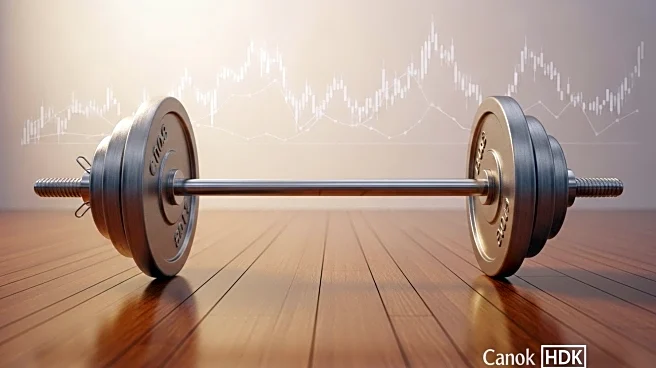What is the story about?
What's Happening?
In September, investors in 401(k) plans moved their allocations from stocks to bonds and cash, according to an analysis by Alight, a retirement plan administrator. This shift indicates a preference for safer investment options despite the stock market reaching record highs. The analysis, which reviewed trading activity of over 2 million people with more than $200 billion in assets, found that 82% of investor inflows went to bond, stable value, and money market funds. Specifically, bond funds captured 39% of inflows, while stable value and money market funds received 25% and 18%, respectively. Conversely, large-cap U.S. stock funds saw 38% of outflows, with company stock and small-cap stock funds experiencing 28% and 12% outflows, respectively.
Why It's Important?
The shift towards bonds and cash in 401(k) plans reflects investor caution amid economic uncertainty. This trend could impact the stock market by reducing demand for equities, potentially leading to lower stock prices. For investors, moving to more conservative assets may offer stability but could also limit potential gains if the stock market continues to rise. Financial advisors and retirement planners may need to reassess strategies to balance risk and reward for clients. Additionally, this behavior could influence broader economic trends, as reduced equity investment might affect corporate funding and growth.
What's Next?
If economic uncertainty persists, investors may continue favoring bonds and cash, potentially leading to further shifts in asset allocations within retirement plans. Financial institutions and advisors might respond by offering more tailored advice to navigate market volatility. Additionally, policymakers could consider measures to stabilize the economy and restore investor confidence in equities. Monitoring these trends will be crucial for understanding the long-term implications on retirement savings and market dynamics.
AI Generated Content
Do you find this article useful?













